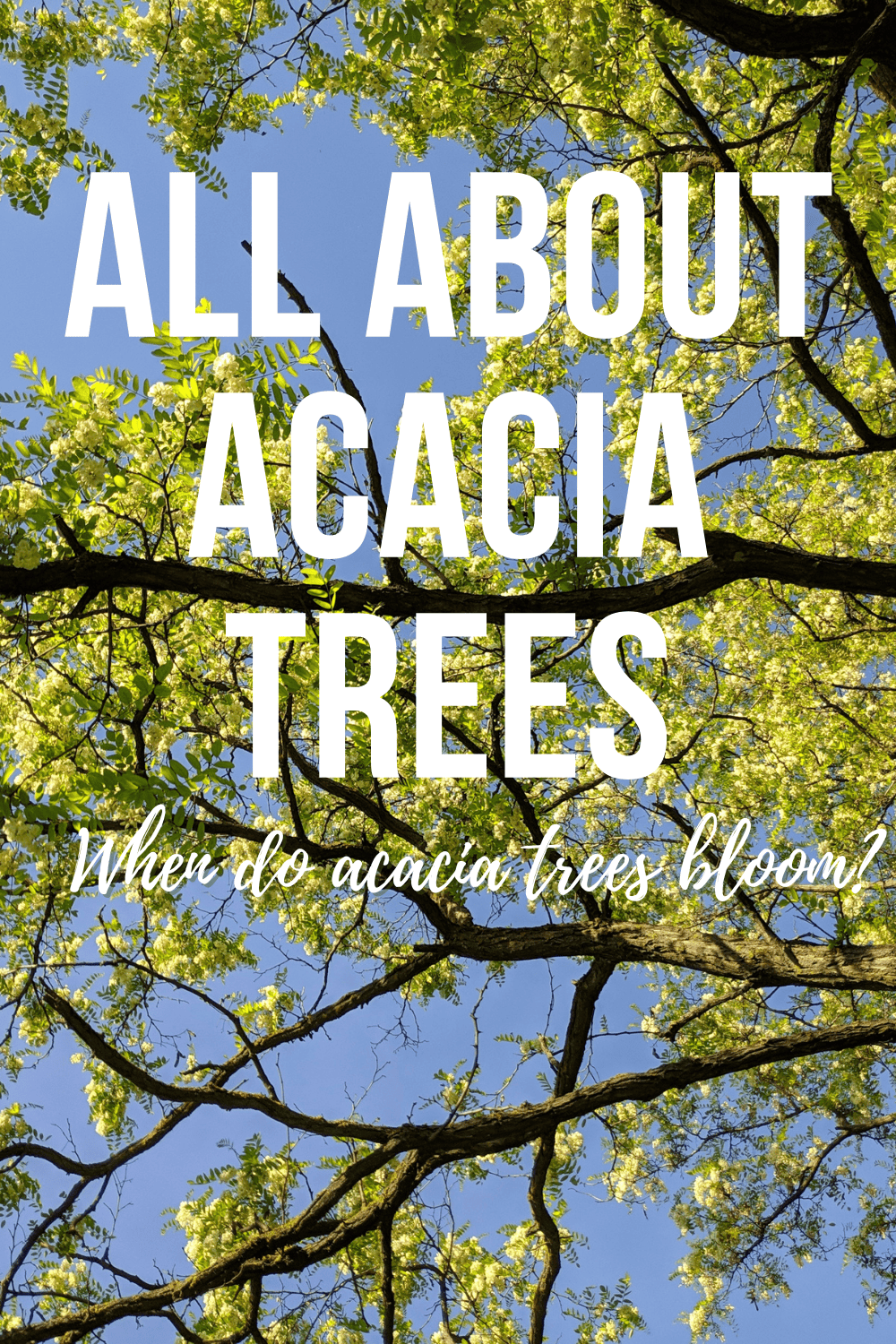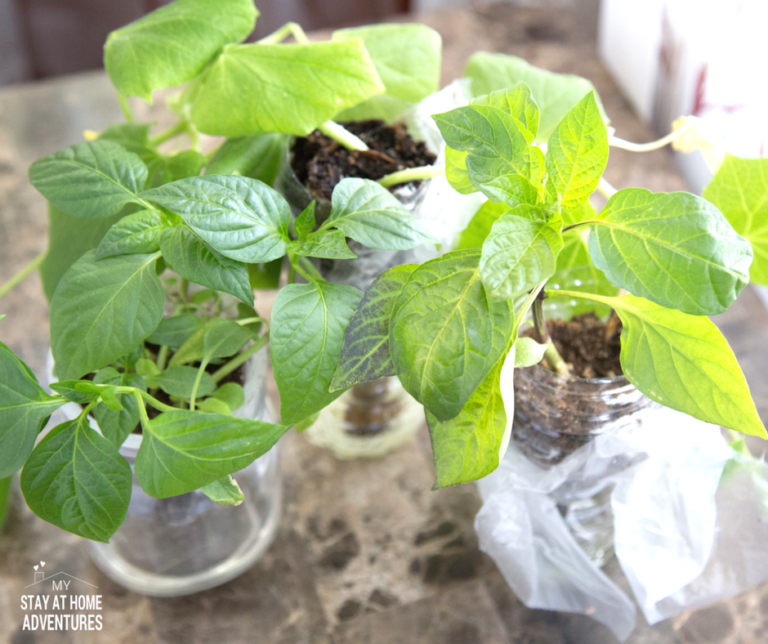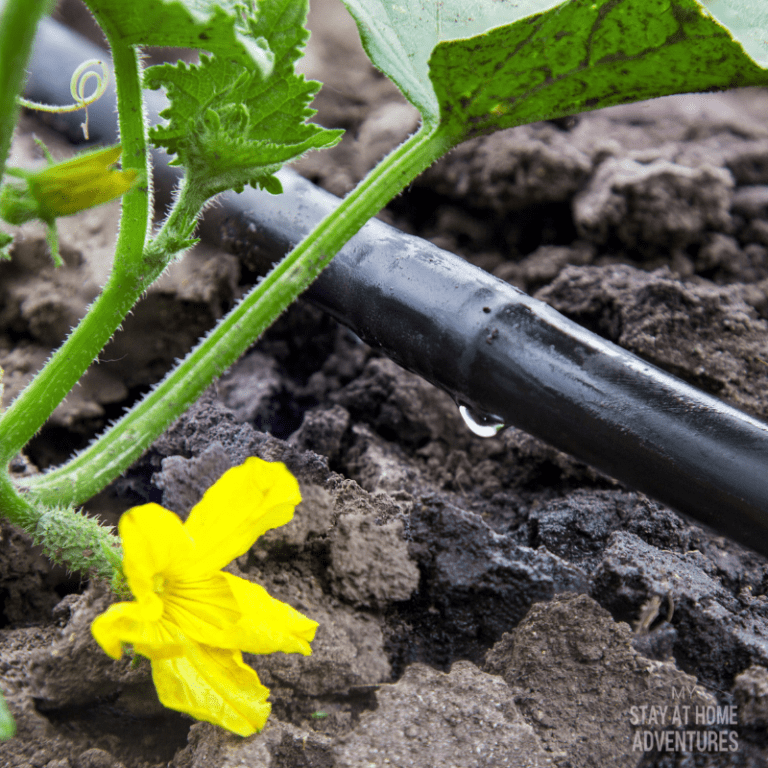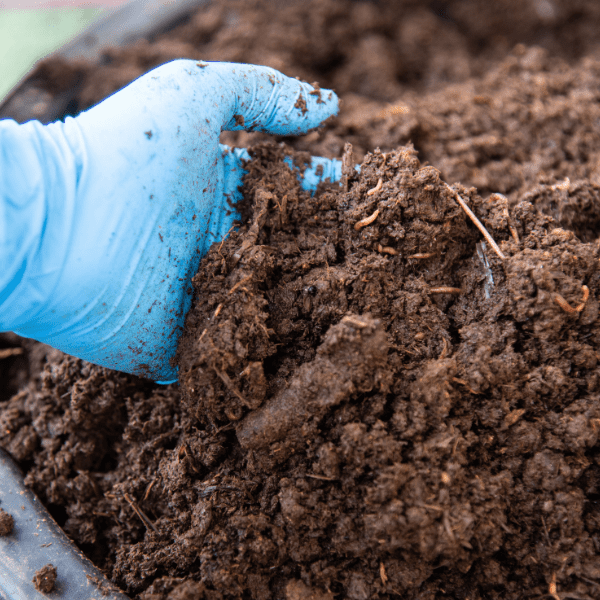All About Acacia Trees – When do acacia trees bloom?
This post may contain affiliate links which might earn us money. Please read my Disclosure and Privacy policies hereWith its cheery yellow flowers, lush green, fern-like foliage, and a graceful habit, an acacia tree makes a beautiful addition to any garden.
What is the Acacia Tree?
Acacias are native to tropical and subtropical regions of the world and a common sight in Australia, Africa, and the southwestern United States. The genus name is derived from the Greek word ‘akakia,' which means ‘thorny Egyptian tree.'
Some varieties of acacia are deciduous, but the most commonly planted ones are evergreen and keep their foliage in all seasons, creating year-round interest.
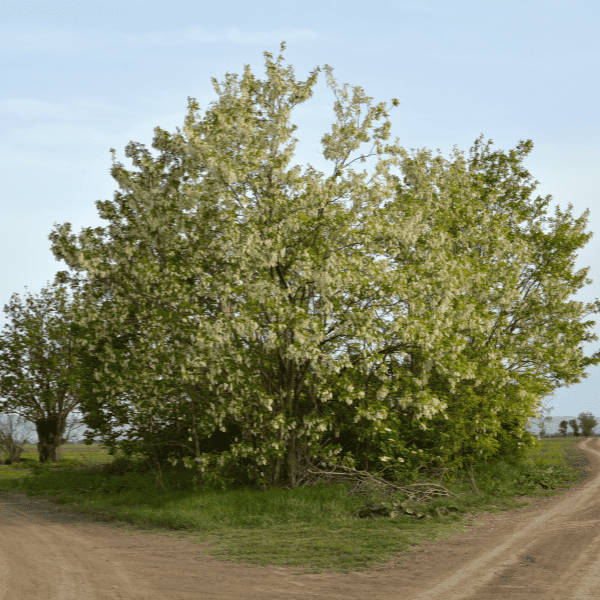
Other Names for Acacia Trees
As you'd expect from a species found across such a large part of the planet, acacia trees and shrubs are also known by other names.
In Australia, they're most commonly referred to as wattle trees. Acacias are also widely known as mimosa trees, particularly in Europe and the US.
Types of Acacia
The genus Acacia comprises over 1000 acacia species. All these different species are closely related and belong to the Fabacaea pea family and the subfamily Mimosoideae. Being the hardiest variety, Acacia dealbata (Silver Wattle) is the most common type in the UK.
Other acacia species include Acacia farnesiana (Sweet Acacia), Acacia baileyana (Cootamundra Wattle, Golden Mimosa, Bailey Acacia), Acacia retinodes (Swamp Wattle), Acacia mearnsii (Black Wattle), Acacia longofolia (Sydney Golden Wattle), and Acacia decurrens (Green Wattle).
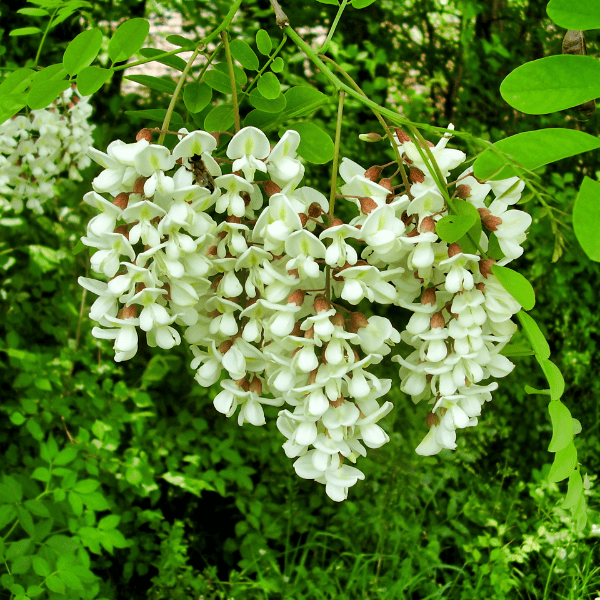
When Do Acacia Trees Bloom?
All acacia species bloom between late winter and mid-spring. Depending on when the warmer spring weather starts to appear, some varieties, such as silver wattle, will flower as early as February, while others hold off until April.
Acacia flowers don't tend to be damaged by frosts and brighten the garden during late winter and early spring when not much else is in bloom.
Characteristics Of Acacia Trees
While mimosa species have slight differences, they also have a lot in common.
Growth Habit
Many species of acacia trees are fast growers, taking on up to a metre per year, with long roots that help prevent soil erosion. These plants have a graceful habit and can be grown as single-trunk trees or multi-stemmed shrubs.
Acacia trees live for around 30 years and occasionally reach as old as 50. Left unpruned, they can reach up to 30 feet tall.
Foliage
An acacia is a medium-sized tree or large shrub with pinnate leaves that grow in rows along and around a central stem. Many wattle varieties have sharp thorns growing up the stem to discourage animals from eating the foliage and bark.
Acacia foliage is usually bright green, dark green or bluish green, and their growth pattern gives them a feathery, fern-like appearance. Acacia is usually an evergreen tree and keeps its leaves throughout the year.
Flowers
Acacias bloom clusters of small spherical, fuzzy flowers with a pleasantly sweet fragrance. The flowers have multiple stamens, which gives them the appearance of small pom-poms.
Most types of mimosa produce bright yellow flowers, but sometimes pale yellow or fragrant white flowers will grow instead. The white and yellow flowers both attract bees, butterflies and other pollinators to the garden.
Bark
The tannin-rich bark helps protect the trees and shrubs against pests and disease. Depending on the tree variety, the bark can be reddish-brown to grey. Acacia bark is deeply furrowed, which produces a cracked effect.
How to Grow and Care for Acacia Trees
An acacia is relatively undemanding and easy to care for.
Where to Plant an Acacia
Acacias love to soak up the sun's rays, and a sheltered west or south-facing spot in full sun is ideal. They grow well alongside other plants, and a mimosa tree or shrub planted towards the back of a border adds height and year-round interest to the garden.
Acacias are occasionally grown as house plants but grow best either in a greenhouse or a part of the garden that benefits from the full sun. If you decide to keep your mimosa inside, place it in a conservatory or next to a large window where it can thrive in full sun.
It's worth noting that even the hardiest acacia dealbata/silver wattle variety isn't fully hardy in the UK. Move it indoors or provide plenty of mulch for additional insulation during the winter.
What Time of Year Do You Prune Acacia?
A mimosa tree tolerates regular pruning very well. However, it doesn't need much pruning once established. Young trees and shrubs may need a little pruning to encourage them to grow in an attractive shape. But once mature, acacia pruning can be limited to removing dead or damaged branches.
Mid-spring is the best time of year to prune acacia dealbata. April is ideal as the growing season has begun, but the risk of frost has passed.
What Type of Soil is Best for Acacias?
Acacia trees thrive in neutral to slightly acidic soil. They need well-draining soil that doesn't retain too much water. A loamy or sandy soil is ideal.
How Often Should I Water a Wattle?
An acacia tree or shrub planted in the garden is drought tolerant, meaning it shouldn't need watered once it is established. The deep reaching roots can absorb all the moisture it needs from the soil.
Young trees and those planted in pots need some extra help, especially during a particularly dry season. Water these when the soil no longer feels moist. In hot weather, water the tree in the evening to prevent the moisture from evaporating in the heat.
Should I Feed an Acacia Tree?
Generally speaking, acacias don't need feeding, as they take all the nutrients they need from the soil. However, adding some well-rotted organic matter helps retain soil moisture and boost trees and shrubs.
Acacia Tree Safety Tips
Most acacia trees are non-toxic to humans, birds and animals. However, ingesting too much can lead to discomfort.
Due to the sharp thorns running up the stems, it's always wise to wear a long-sleeved top and protective gardening gloves when handling an acacia.
Whether you know them as acacia, wattle or mimosa, these trees and shrubs add colour and height interest to the garden throughout the year. With so many species to choose from, your garden will be bursting with colour from late winter to early spring with one of these stunning trees.

